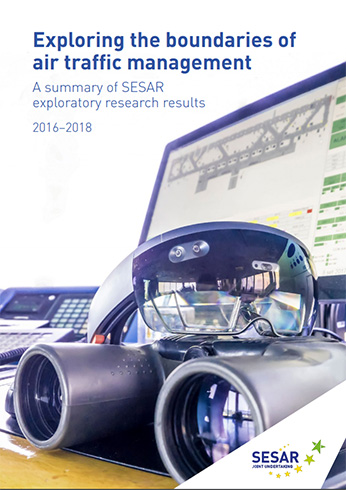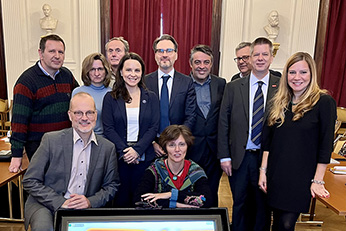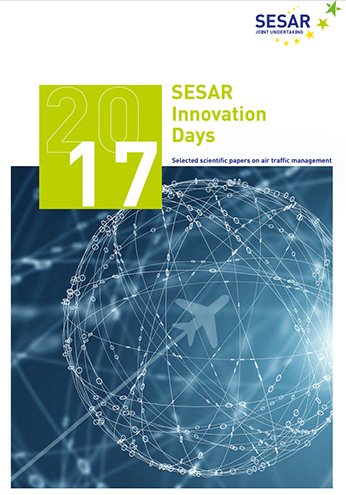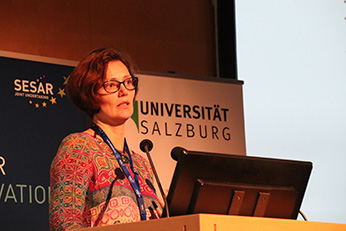
For Tatjana (Tanja) Bolic, postdoctoral fellow at the University of Trieste and member of the SESAR JU Scientific Committee, a researcher is a lot like a detective; following leads and solving sometimes what seem like impossible problems. In this article, she recalls what drew her to research in the first place and why the complex and multidisciplinary domain of air traffic management is far from ‘elementary’.
Can you say a few words about your background?
I have always been interested in aviation, which is what you get when you have a pilot for a father. My aviation related education started early, from a high school - it was either air transport high school or biology one, and the air transport won. After wanting to be a pilot, and then air traffic controller, the circumstances landed me in the air transport engineering in Belgrade, Serbia, in one of the few undergraduate programmes world-wide that are covering this specialization. It was my privilege to continue to a Ph.D. at the University of California at Berkeley.
What drew you to research and more specifically to ATM research?
I got the research calling along my education path, when I realised that research is a lot like being a detective: we either need to solve a problem, or investigate a new ways of doing things. Over the years, my research in the air traffic management (ATM) allowed me to explore different multidisciplinary areas – from basic engineering, airport design, diffusion of innovation to human factors, economic demand management mechanisms, crisis management and meteorology. The diversity of topics and the techniques required to address various problems is one of the most rewarding aspects of ATM research.
Why do you feel researching ATM is so important to European society and economy?
The transport and mobility are the connective tissues of our society. The aviation has been steadily growing over the years, and is now one of the most important pillars of European transportation. We have seen that with the traffic, the magnitude of disruptions and consequent delays are also increasing. If we want to have well connected society, we need to improve the ATM part of the transportation – to either resolve emerging problems, or to find more efficient ways of managing traffic.
What was the last "Eureka" moment you experienced/witnessed in the field of ATM research?
I think that the ATM is now such an important part of the safety in aviation that it is not conducive to big Eureka moments (at least in terms of delivering quickly Eureka type of solutions). It is usually a string of small of “well, why not do this in a new way” moments. What is becoming more and more important is an inherent multi-disciplinarity to address the complexity of stakeholder and system interactions. In the past, the trend was on specialisation – human factors, communications navigation and surveillance (CNS), economics, IT, just to mention some. However, in order to further improve complex systems like ATM, there is a need for tight collaboration of experts from different fields, especially involving expertise from outside ATM. This is in my opinion very exciting challenge. For example, discovering what the satellite missions in the field of atmospheric science can offer in terms of real-time observation and monitoring to satisfy operational needs in ATM.
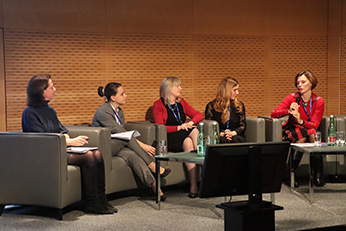
Is air traffic management moving with the times? If yes, what are the drivers? If no, what is holding us back?
Yes, I think we are moving with the times. Maybe not as fast as some would like, or in a visibly disruptive way. On the other hand, I think that this is a good thing. Aviation is now transporting more people than ever before, and it is the safest mode of transport, not by chance. We learned, many times the hard way that certain things need to be done in a certain way (e.g. closing an airport if winds are too strong, or the visibility is too low).
Another point is that the aviation and ATM are forming a big and complex system. Over time we also learned that in order to introduce changes safely into such a complex system, we need to check and re-check all the possible ways in which the things can go wrong. That takes time. And over that time, the operational needs can change, and then we need to adapt the solution to the new needs. So, yes, we are moving with the times even if it is not easy or straightforward as we would like.
How do you see SESAR exploratory research meeting biggest challenges facing air traffic management today?
In the framework of SESAR 2020, the exploratory research has been significantly increased with respect to SESAR under the FP7 programme, and the projects are producing exciting results. Of course, it would be unrealistic to expect that all will proceed to the development or deployment stages. Sometimes, finding out that something does not work is as important, if not more important than finding something that works well. These are the building blocks of research as we all strive not to repeat the same mistakes. I feel that the exploratory research will need to be strengthened even further in the years to come, to have a more agile innovation pipeline.
Are there developments taking place in other sectors that we should be closely following or even replicating?
There always are. There were so many breakthroughs and advancements in various sectors in the last years that sometimes the bigger problem is what to choose. For example, different space missions have been launched by European Space Agency, several aimed at Earth observations. What is fascinating for me is how these missions influenced the advancement in the atmospheric sciences – both in the monitoring and forecasting areas. These can and should be taken up further in the area of aviation meteorology, for improving both the forecasts and observation capabilities.
How do you feel your expertise and participation in the SESAR Scientific Committee will contribute to supporting the SESAR vision
The members of the Scientific Committee are coming from different fields within the ATM and it is wonderful to engage in discussions about science and progress in ATM. I think that the most important contributions are coming out of these discussions where we are learning from each other and from the ongoing SESAR projects in order to find ways of further improving the quality of research results, and to advise on scientific steering of the SESAR programme itself.
Can you mention a couple of projects in the current exploratory research portfolio that you feel really stand out and why?
ATM4E is an exploratory research project that tested the feasibility of a concept for environmental assessment of ATM operations, by developing the environmental change functions (ECF). The aim of ECFs is to define a link between aircraft emission and environmental impact, assessing the impact on CO2, NOx, noise, contrails, just to mention some. Having defined the ECF functions, the project then applied these functions in the environmental optimization of flight trajectories, and assessed the difference between the environmental and economic – fuel (current state of affairs) optimization of trajectories.
The recent report from the UN’s Intergovernmental Panel on Climate Change warns that decisive actions are needed in all sectors of life, in order to avoid the grave climate change effects. The results of this project can be the foundation of understanding first the impact of aircraft emissions on the atmosphere (and climate), and secondly on what we could reasonably expect that the aviation can do about it .

